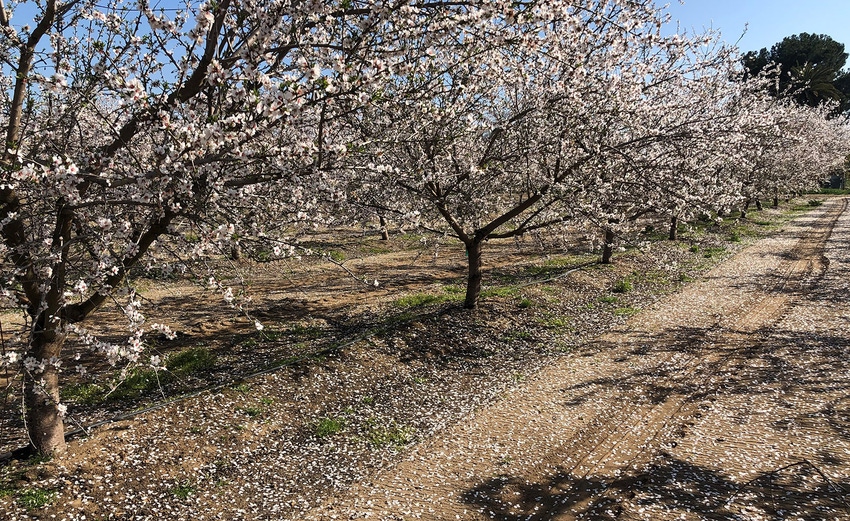
If you play a part in California’s almond industry, your annual go-nuts period is about to get underway and this year, it’s go-nuts in a generally good way.
“This year’s crop looks fantastic,” says Ryan Jacobsen, CEO of the Fresno County Farm Bureau and a tree nut grower himself. “We had what was probably one of the best blooms in a generation. Weather was on the dry and warm side, so pollination was perfect, and as a result, the crop looks exceptional — on target to come in at current USDA expectations.”
Fresno County plays a big part in fulfilling those expectations as almonds represent an economic impact somewhere in the $1.2 billion category based on 129,600 bearing trees planted over 145,382 acres.
The county, home to 350 different crops, ranks almonds as its No. 1 crop, just shy of 20% of the total California almond industry. According to the Almond Board of California, Fresno County ranks second behind the combined crop of Butte and Colusa counties. And this year’s busy season promises to be just that, kicked off in the central region of the San Joaquin Valley and anticipated to ramp up as we move into August and September.
Not that everything is rosy as some problems are on-going.
“Hands down, our number one industry issue — as well as for every other segment of agriculture in the South Valley — is water, whether it’s cutbacks on surface supply or implementation of the sustainable groundwater management act,” Jacobsen said. “This one weighs heavily on not just the future of the almond industry, but that of agriculture in general in the San Joaquin Valley.”
Trade an issue
Add to that the trade issue because California provides nearly 80% of the world’s supply of almonds.
“These markets are extraordinarily important to us and we were pleased with the signing of USMCA as well as the China phase of that trade deal,” he said. “These are good steps forward in trying to solidify our trading partner relationships.”
And if water and trade issues rank at the top of the list, they are quickly followed by a multitude of other problems involving things like the coronavirus impact, over-regulation, and a lack of labor. “The success of the California almond industry over the past few decades has been driven by a multitude of factors,” he acknowledges.
One of those factors is a result of this year’s largesse, in other words, good things that bring about new problems.
“There has been more severe breakage or tree failures than we’re typically accustomed to because tree set was so good this year,” he said. “There’s been more limb breakage this season because the crop is so exceptional.
“With such a significant crop expected this year, it’s going to be interesting to see how those same trees set for next year because this season’s great crop places a greater stress on trees going into next year. On the flip side, there’s a significant number of non-bearing acreage that will be coming into bearing years and that may make up for some of the difference. It’s not a bad problem to have and I remain optimistic and bullish.”
One disappointment this year along Fresno County’s fabled Blossom Trail was the fact that while the blooms were spectacular, they were short-lived.
“Our almond bloom period most years lasts in the neighborhood of two weeks or so while this year it went extraordinarily fast,” he said. “We went from first bloom to peak bloom in about five days. It was beautiful because everything was peaking at one given time and then, poof, it was gone.”
For more news on tree nuts as reported by growers and farm advisors, subscribe to the Tree Nut Farm Press e-newsletter.
Read more about:
AlmondsAbout the Author(s)
You May Also Like




